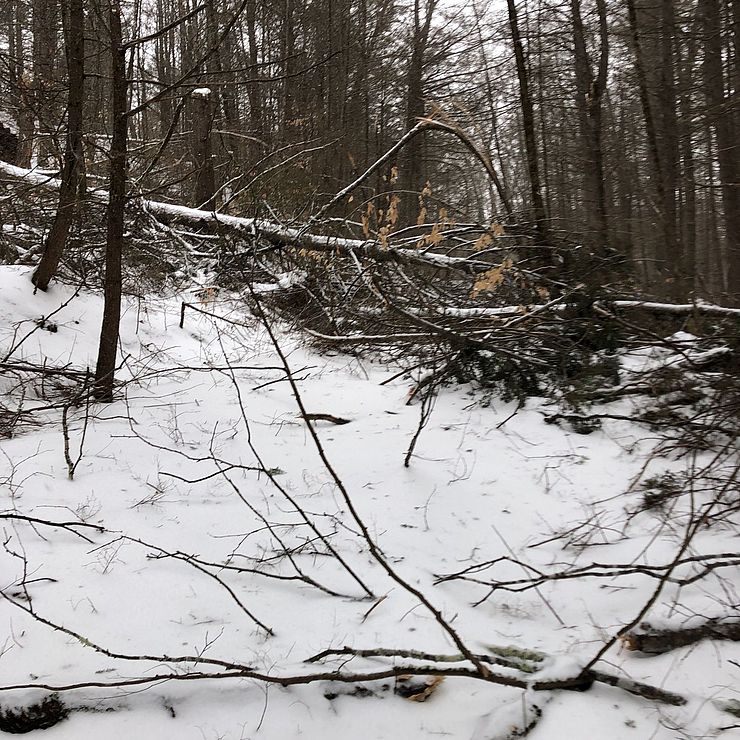Lessons in resilience from a winter walk in the woods

This winter has been an interesting one with very little snowpack and numerous freeze-thaw-rain cycles. Trail conditions have varied from week to week - a sheet of slick ice, a muddy mess, or a few precious days of fluffy snow and plans for cross country skiing.
The need for resilience as a winter-trail enthusiast is clear - be prepared for varied conditions, be flexible in choosing which activity best suits current conditions, and be aware of your impact on the trails.
When striking out on any trail in winter, consider bringing traction footwear, and poles, and definitely wearing waterproof boots (never hurts to bring extra socks). If you encounter excessively muddy trails, turn around to avoid damaging them, or hike directly through mud rather than around it, which widens the trail and tramples vegetation.
Personal resilience on the trail echoes lessons that scientists are learning about resilience of the forests we're hiking through - both must be able to accept and adapt to some change. Disturbance and change are part of natural systems. Resilience is the ability of a system to recover after disturbance, which determines its ability to persist and function over time. The degree and extent of a disturbance affects the capacity of a system to recover.
For example, in a typical winter, forests often experience damage from wind and ice. This is most commonly local damage; a few trees experience broken limbs and some trees tip over. The ability of the forest to function across a larger landscape continues - some trees benefit from increased light and growing space from the loss of their neighbors - the forest almost ignores the event. On the other hand, when the change is larger and more extensive, the system will be more stressed and less resilient.
Warmer winter weather has led to some storms with snow that felt like wet concrete. It stuck to trees and branches, bending younger trees down, and snapping branches and trunks in two. After last month's winter storms brought heavy snow, Mount Grace has had reports of many downed trees across our trails. Many in our area found roads blocked and were without power for days as utility crews worked to clear trees from power lines.
Leading up to these impactful storms were other more subtle conditions that also contributed to a more stressed forest. Fewer days with frozen soil can make trees less resistant to storm and snow damage because the dormant trees are less stable in muddy soil. Warming temperatures in the winter also have the potential to produce more ice than snow resulting in more damage across large areas. Breakage in tops and along major limbs leads to decay and rot that eventually infects the entire tree. So a warmer climate, with wetter soils and less snow, could result in more damage to trees – even if storms do not become more common in the future.
Just as individual hikers can build resilience for their winter hiking, through gear or physical conditioning or a flexible attitude, there are professional foresters who are writing resilience into their forest management plans to help trees stay healthy under stress. The Northern Institute of Applied Climate Science (NIACS) has developed tools to help forest managers integrate climate considerations into natural resource management planning and activities. Check out their menu of adaptation strategies and approaches for forest management using real-world examples at adaptationworkbook.org
Please note that the blowdowns on Mount Grace trails may remain until our volunteer workdays for spring maintenance. To volunteer for spring workdays, ongoing trail monitoring, and especially if you have chainsaw experience, e-mail May at grzybowski@mountgrace.org
